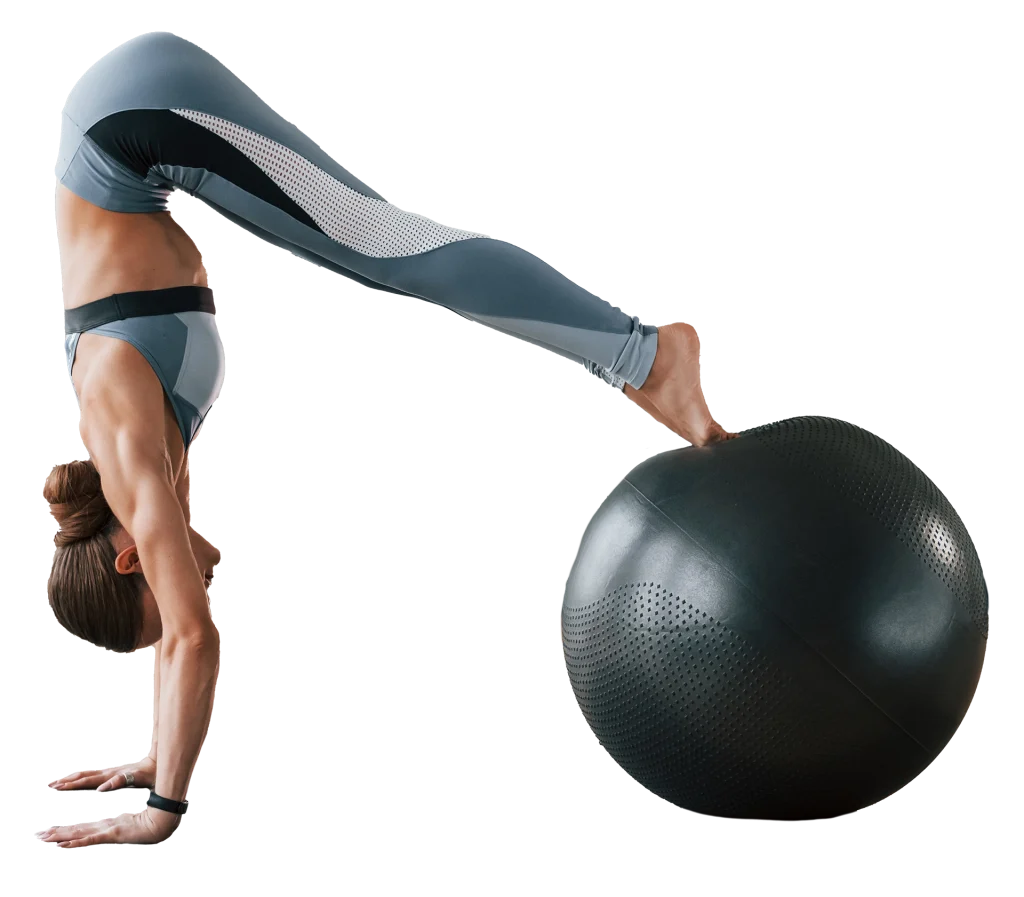TRAINING
Progressing From Stable To Unstable: A Key Strategy For Fitness Success
The journey for your clients and members to achieve their fitness goals is an ongoing process of growth and improvement. Tim Sunderland explores.

One crucial strategy for achieving long-term success in fitness, is through the concept of ‘progression’. Specifically, transitioning from stable to unstable exercises can provide numerous benefits and challenge your clients’ and members’ physicality in new and exciting ways.
By understanding the principles behind stability and instability training, and incorporating progressive techniques into your fitness programming, your clients and members can unlock greater strength, stability, and overall fitness. This article explores the significance of progression in fitness. It also guides you on how to effectively incorporate unstable training into your workouts for optimal results. For personal trainers, this approach can be a game-changer in helping clients achieve their fitness aspirations.
The Importance of Progression in Fitness
In the pursuit of fitness goals, we all recognise the need for hard work and dedication. Yet, one strategy often overlooked is progression. Whether your client’s aim is to build strength, improve flexibility, or lose weight, progressing their workouts is essential for continued success.
Progression entails gradually increasing the challenge of their workouts over time. This can involve lifting heavier weights, increasing the intensity of cardio exercises, or trying new training methods. By continually pushing your clients’ and members’ boundaries, you will keep their body guessing, which encourages continual adaptation and prevents plateaus.
By understanding the principles behind stability and instability training, and incorporating progressive techniques into your fitness programming, your clients and members can unlock greater strength, stability, and overall fitness.
Understanding Stability and Instability Training

When it comes to progressing your clients’ and members’ workouts, one effective method is incorporating stability and instability training.
‘Stability training’ involves exercises performed on a stable surface, such as the ground, and primarily targets larger muscle groups. Typically, stability training emphasises strength and power, which helps to provide your clients with a solid foundation for movement and overall fitness.
In contrast, ‘instability training’ introduces unstable surfaces on which to train, often using equipment such as a balance board or Swiss ball. Instability training is designed to challenge the smaller stabiliser muscles, which promotes better balance and coordination.
The Benefits of Progressing from Stable to Unstable Exercises
Following are three key benefits your members and clients can enjoy when transitioning from stable to unstable exercises.
Enhanced core strength and stabilisation
Unstable training compels your core muscles to work harder to maintain balance, leading to a stronger and more resilient core.
Improved balance and coordination
By challenging your body to stabilise on an unstable surface, you train your nervous system to react and adapt quickly, translating into better balance in everyday activities and sports.
Increased muscle activation and challenge
Unstable surfaces require recruitment of more muscle fibres, resulting in a more intense workout that engages different muscle groups, promoting all-around strength development.

Three Steps to Introduce Instability Training

Step 1
Introduce basic stable exercises
To add some instability training into your clients’ and members’ workouts, start first by incorporating basic stability exercises such as planks, squats, and lunges into their program. These exercises provide a strong foundation for progressing to more challenging unstable movements.
Step 2
Gradually introduce unstable elements
As your clients become comfortable with stability exercises, gradually introduce unstable elements such as a balance board, BOSU, Swiss ball or suspension trainer. Start with simple movements and gradually increase the difficulty as their balance and coordination improves.
Step 3
Integrate unstable training into different workout modalities
Whether your clients are into strength training, yoga or cardio, there are plenty of ways to add variety into their favourite workouts. By incorporating instability training elements, you can increase the challenge, and ultimately, the results that they can achieve.
Advanced Techniques for Progressing and Challenging Stability

Step 1
Once your clients and members have mastered stability on solid ground, it’s time to take things up a notch and introduce some wobbling into their workouts using unstable surfaces like BOSUs, balance boards or even a foam pad. Doing so will enable you to challenge their abilities in new and exciting ways. Just be prepared for some wobbly moments and the occasional hilarious attempt to stay upright!
Step 2
When your clients and members are ready to kick it up yet another notch, it’s time to introduce dynamic movements and unstable equipment. Exercises like single-leg squats on a foam pad, Swiss ball serratus circles, or medball catch and throws while seated on a Swiss ball provide ideal challenges. These movements not only work their stabiliser muscles, but they also add an element of fun and unpredictability to their workouts. Just remember to focus on maintaining correct form, and avoid any embarrassing faceplants!
Keep in mind, instability training isn’t limited to standing on one foot. You can spice up their resistance and cardiovascular workouts by adding a stability component. This can be achieved with exercises like push-ups or shoulder presses on a stability ball, or by incorporating a balance challenge as an active rest during their cardio routine (e.g., seated balance on a Swiss ball).
Three Common Mistakes to Avoid When Transitioning from Stable to Unstable Training
Step 1
Skipping proper progression steps
We understand your excitement to dive right into the world of instability training, but hold your horses! Skipping the proper progression steps can lead to frustration or, in worst case scenarios, injuries. So be sure to take your time and gradually introduce unstable surfaces and movements into your clients’ and members’ routine.
Step 2
Neglecting proper form and technique
Unstable training can sometimes lead to wonky form and questionable technique. Don’t let your clients’ enthusiasm for wobbling overshadow the importance of maintaining proper form. Take the time to ensure your clients and members understand the correct alignment and mechanics of each exercise, before adding the instability factor. It will help them avoid looking like a flailing chicken and, more crucially, minimise their risk of injury.

Step 3
Overlooking safety precautions
While instability training is a blast, safety should always be a top priority. Teach your clients and members to always pay attention to their surroundings and ensure they have enough space to safely perform the exercises. Trying to balance on a swaying platform in the middle of a crowded gym is never recommended. Encourage them to train smart, use common sense, and to always ask for assistance when needed.
Using Instability Training to Overcome Plateaus

If you have clients or members who feel stuck in a fitness rut, then instability training might be the ticket to break through their stubborn plateaus. By continually challenging their stability muscles and forcing their body to adapt to new movements, they can kickstart progress and keep the gains coming. Plus, this type of training adds a refreshing twist to their workouts, which can remotivate, re-energise and re-engage.
Unstable training can sometimes lead to wonky form and questionable technique. Don't let your clients’ enthusiasm for wobbling overshadow the importance of maintaining proper form.
Adding this training to a fitness regime helps to keep workouts fresh and exciting, but it also challenges your clients’ and members’ bodies in new ways, leading to increased strength, and stability gains. So, teach them how to embrace the wobbling, embrace the challenges, and remind them that fitness is a lifelong journey full of unexpected twists and turns, and when they push their limits, that’s where the magic happens!


Tim Sunderland
Tim is a fitness professional and author at the Functional Training Institute, which offers a certification program in Swiss ball training.